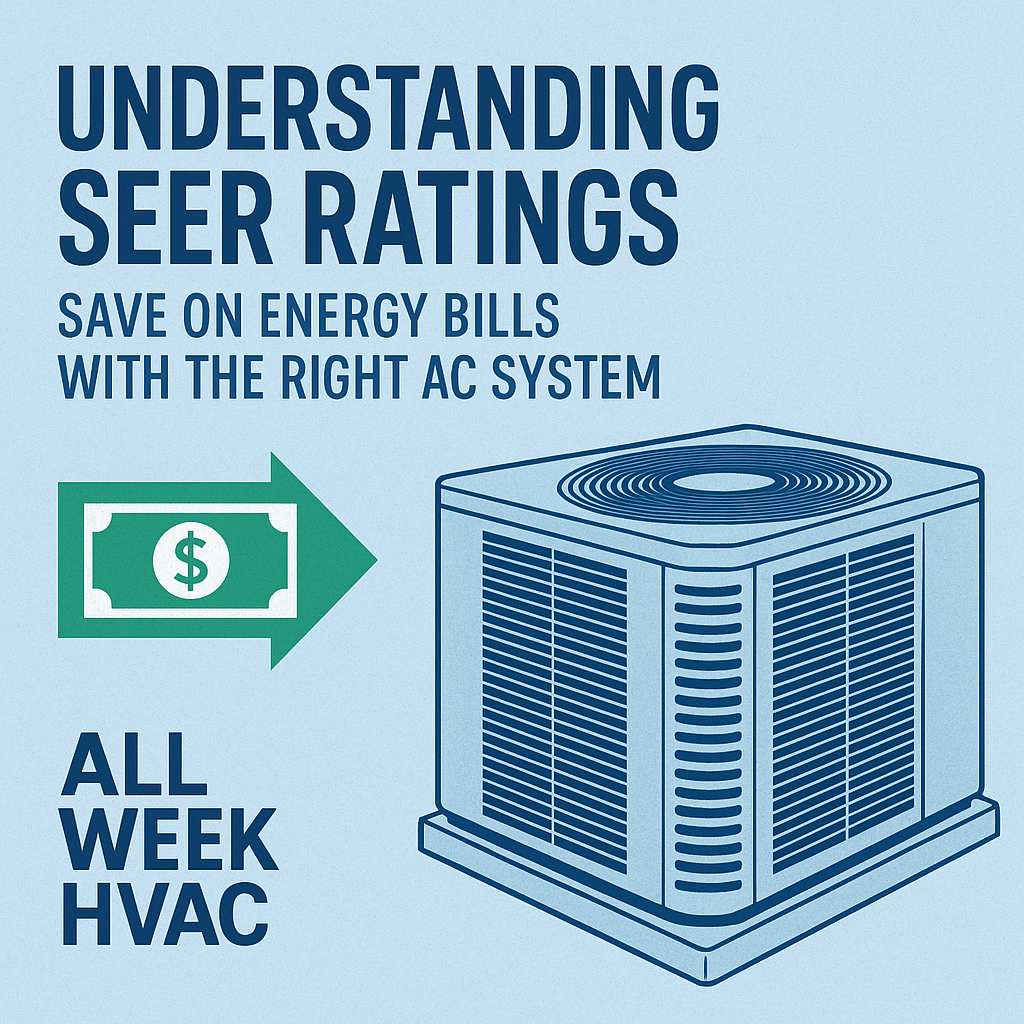Understanding SEER Ratings and How They Impact Your Energy Bills

Understanding SEER Ratings: Save on Energy Bills with the Right AC System | All Week HVAC
📘What Is a SEER Rating and Why It Matters
SEER stands for Seasonal Energy Efficiency Ratio, and it’s a critical metric used to measure the efficiency of air conditioning systems. Essentially, the SEER rating tells you how much cooling output your AC provides for each unit of energy it consumes throughout a typical cooling season. The higher the SEER number, the more efficient the system. In the United States, federal regulations set minimum SEER standards by region; for instance, as of 2023, new central AC units must have a minimum SEER2 rating of 14 in northern states and 15 in southern states. These updated SEER2 standards use more rigorous testing to reflect real-world performance, giving homeowners a clearer picture of energy consumption. Understanding SEER ratings is essential for anyone purchasing a new air conditioner, especially in areas with long, hot summers where cooling costs make up a significant part of the electric bill.
💸How SEER Ratings Affect Your Energy Bills
When it comes to monthly energy bills, the SEER rating of your air conditioning system can make a massive difference. For example, upgrading from an older unit with a SEER of 10 to a newer system rated SEER 16 can cut your energy consumption by up to 40%, depending on your usage patterns and climate. This translates directly into lower utility costs and long-term savings that often outweigh the initial price of the higher-efficiency system. Many homeowners make the mistake of choosing the cheapest AC unit without considering operating costs over time. While high-SEER systems might cost more upfront, their superior efficiency means you’ll spend significantly less on cooling your home. Moreover, some utility companies offer rebates or incentives for installing high-efficiency HVAC units, adding another layer of savings. Investing in a higher SEER system is not only an energy-efficient choice but a financially smart one—especially if your existing unit is more than 10 years old.
🛠️Choosing the Right SEER Rating for Your Home
When selecting a new air conditioning system, it’s important to balance SEER ratings with your budget, climate, and home size. In hot and humid regions like New Jersey, where cooling demand is high during the summer months, opting for a unit with a SEER rating of 16 or above can significantly reduce your energy usage. For moderate climates, SEER 14–15 might be sufficient, especially if your home is well-insulated and energy-efficient. However, a higher SEER rating doesn’t always mean it’s the best choice—too large or too advanced a system for your needs can lead to inefficiency due to short cycling. It’s best to consult with a licensed HVAC professional to assess your home’s layout, ductwork, insulation, and usage habits. At All Week Plumbing & HVAC, we help homeowners choose the right energy-efficient systems that deliver performance without unnecessary costs. Whether you’re replacing an old unit or planning a new installation, understanding SEER ratings empowers you to make smarter, long-term decisions that directly benefit your comfort and your wallet.



